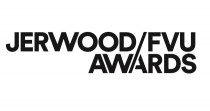Computers + Moving image
“Script kiddies” is a derogatory term for a new wave of bedroom computer programmers that rely on huge chunks of code written by others. Their projects usually end up as Frankenstein’s monster, carrying a series of modular components that work well independently, but that are inelegantly tacked together.
I was warned about a new wave of motion graphics artists that seem to be following the same convention. There’s a backlash amongst some of the creative people I work with. On one hand, technology is making our lives easier – plugins, scripts, example scenes, software & tutorials mean that it’s very easy to make something pretty onscreen in a short amount of time. This (according to one MA lecturer) has caused the moving-image equivalent of “script kiddies” to unashamedly rip anything and everything they see fit. Obviously, this can be a useful workflow on a tight deadline. As long as nobody’s being plagiarised, they argue that a collage of methods could be the way forward.
One can sympathise that this is a sign of the times. The Internet is a huge collaborative community and this way of working could be a response to the very unique online disposable culture. I do believe that this workflow dilutes any message that was originally in the project and makes the craft very reductive. Some artistic integrity is obviously also lost.
I had the good fortune to visit and workshop with an US art school last year. It is famous for its motion graphic graduates, although I found huge inconsistencies with their work ethic verses one that may be found in a typical UK art school.
I helped with some portfolio reviews but it became clear that these students were far more career oriented than their UK equivalent. There was a flurry of sincere hand-shakes and “Mr. Houston”s that composed their rehearsed ritualistic job-dance. These were people that had just finished an art degree but had no intention of talking about their work. They were interested in using software packages to land a steady job. Our reference points were way off. The majority aspired to be soaked up into anonymity behind the wall of a big studio and quickly secure themselves a rung on the career ladder.
The truth is that I had only been a graduate for a year and had no idea if their work ethic was something I should adopt.
I found it disappointing that they could break their own work down into modular components. They willingly did it before my eyes:
“This was done using the new Trapcode Particular,
this is a VRAY render with RSMB applied,
this is made of thinking particles in C4D.”
Such a reductionist approach made it very easy to dismiss a potentially beautiful film as an exercise in a software package. Anybody can be taught to keyframe, although it’s rare that the outcome is worth more than the sum of its parts. David O’Reilly famously doesn’t talk about his workflow. He adds a layer of mystery around his process which helps the legacy of his films. Any recent graduate that wants to avoid piracy lawsuits may want to jump on the same bandwagon.
Is the script-kiddie workflow simply a response to the cultural (and economic) pressures that we face as “artists”? I know that I’m hesitant to use any visually distinctive piece of software in my own work as it ends up very transparent.
PART 2 _ THE GOODS:
It’s moving image month at Central Station. I thought it fitting to post a reference bank of inspiration, as opposed to a wall of text that fluctuates back & forth without reaching a definite conclusion.
The following videos are very dependant on process. Computers were either used conceptually or as craft. not necessarily as a starting point. These have the stamp of the director/artist, not the stamp of the software. A mixed bag of very inspiring stuff that you should already have seen.
“Het Klokhuis” Opening titles from Johnny Kelly on Vimeo.
Peripetics from zeitguised on Vimeo.
Please Say Something – Full Length from David O’Reilly on Vimeo.
RECURSION / Zhestkov.com from Maxim Zhestkov on Vimeo.
Asymmetric Cycles: The Work Of Al Jarnow from numerogroup on Vimeo.
The chainsaw solo at 1:04 gets me every time.














Comments